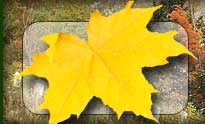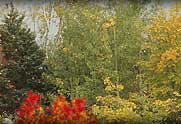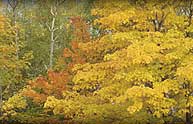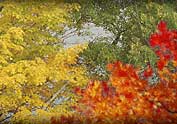How to Choose a Wild Bird Seed Feeder
This month, we will compare wild bird feeders. There are as many different bird feeders as there are opinions. Each has it's own merits. The key design feature in all bird feeders should be how closely each resembles Mother Nature. Not with colors, styles or shapes. The attractiveness to birds will depend how each one functions like a natural food source.
Your bird feeders are nothing more than unnatural seed holders. In nature, every plant contains a seed. Each seed is held in place until nature is ready to release it. Birds are built to hang or grip onto plants that contain a particular food source for each species. The beaks are designed to pluck, hold and crack wild seeds. The most attractive feeder to a wild bird will be the one that acts like a plant.
There are basically two kinds of wild bird seed feeders to choose from. The tube and the hopper. Let's start with the tube. A tube feeder can be made of many materials but the basic shape is a long, vertical, cylindrical tube with holes. Some designs have perches below each hole. A proper tube feeder will have portals in each hole. These portals will have small "tops" inside the tubes. These little covers stop seeds from poring out of the holes. If the seeds pore out, it will scare away the birds. Plants don't have seeds that rush into a birds face, neither should a feeder.
Perches are an unnecessary component for tubes, but almost all manufacturers put them on. There are no perches on a plant. Birds have the ability to cling to the edge of plants or the holes on feeders. We always recommend tube feeders to our customers who desire only small birds. If you wish the same, cut the perches on your tube feeder in half . You will eliminate birds that may be a problem, such as starlings, grackles, pigeons, or mourning doves. Your clinging birds such as chickadee, titmice, and finches can easily cling to small perches.
The other kind of wild bird seed feeder to choose from is called a hopper. Most look like wooden houses that dispense seeds onto a tray area below. Wild bird feeder hoppers come in all kinds of materials and sizes. Once again, a well-designed hopper will imitate a plant. Take a look at the area where the seeds come out. A bird should have to "pluck" a seed from the chamber, without other seeds poring out in the process. If the seeds can easily come out by themselves, the birds can be frightened and leave. Unfortunately, some people think they are helping birds by enlarging these areas for easier access, when they are really stressing the wild birds. Remember, the feeder has to resemble a natural food source. Not by colors, shapes or materials but by design. We always tell people that wild birds would eat out of a bedpan if it was designed properly.
Birds only care about a safe, clean food source. The materials used for feeders run the gambit, but there is one material that should be never used. Pressure-treated lumber contains deadly creosote. It leaches out and kills birds. Never, ever use it to build birdhouses or feeders. It doesn't matter if it weathers well if it kills nature. Cedar is the best wood material. Trek, a recycled material used on decks and docks, is becoming the most popular component of feeders. Choose wisely and your birds will reward you with enjobable memories!
Next month we will discuss different seeds for feeding wild birds. Along with feeders, seed selection will determine bird sightings. Recycle those Christmas trees. Tie them up against your deck railing and watch the birds! They love the instant cover near feeders. Dont' forget, the sharp-shinned hawks in the Newfound region come out of the woods, looking for easy food sources. Come spring, use the trees to create a brush pile on the edge of your property. Cardinals may use it to nest in. Enjoy your winter!
Article written by:
Steve White
Wild Bird Depot, www.wildbirddepot.com
New Hampshire's Largest Variety of Wild Bird Products
|



